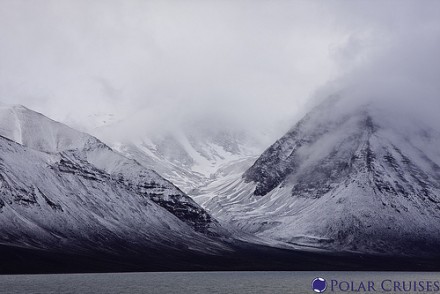It depended on the animals adaptations and characteristics...If the animal's body could stand living in the freezing weather and had traits to support this habitat, it could survive. Some on the other hand, though, were not fit for this new, cold weather and eventually died out!
The great Ice Age, or Glacial Period, was a time when a great mass- of ice came down gradually from the north and covered parts of the world. It came down over North America, and a similar mass of ice came down over northern Europe and western Siberia.
When did this happen? It is thought that it began nearly 1,000,000 years ago. When did it end? In the United Kingdom it may have ended only a few thousand years ago, and in some parts of the world it still has not really ended. The glacial period still remains in Antarctica and Greenland.
Millions of square miles of Central Europe were buried under a great creeping ice sheet which reached as far south as London, Rumania and the southern tip of Russia.
When the Ice Age came, animals from the Arctic migrated southward in front of the glaciers. Animals which could not stand the new, colder conditions were forced to migrate to warmer regions, or die out. Native wild animals now only found in America are merely a remnant of the many varieties of beasts known to have lived there before the Ice Age.
Man, of course, was able to adapt his life to the colder climate. This probably helped him gain in intelligence because more difficult living conditions made him use his mind and ingenuity in order to survive.
Plant life also moved south in front of the glaciers and moved back again as the glaciers melted. But many kinds of plant simply died out. In trying to learn how man developed, scientists study whatever remains of prehistoric man they can find. These include tools, cooking utensils, skeletons, and parts of the body.
When did this happen? It is thought that it began nearly 1,000,000 years ago. When did it end? In the United Kingdom it may have ended only a few thousand years ago, and in some parts of the world it still has not really ended. The glacial period still remains in Antarctica and Greenland.
Millions of square miles of Central Europe were buried under a great creeping ice sheet which reached as far south as London, Rumania and the southern tip of Russia.
When the Ice Age came, animals from the Arctic migrated southward in front of the glaciers. Animals which could not stand the new, colder conditions were forced to migrate to warmer regions, or die out. Native wild animals now only found in America are merely a remnant of the many varieties of beasts known to have lived there before the Ice Age.
Man, of course, was able to adapt his life to the colder climate. This probably helped him gain in intelligence because more difficult living conditions made him use his mind and ingenuity in order to survive.
Plant life also moved south in front of the glaciers and moved back again as the glaciers melted. But many kinds of plant simply died out. In trying to learn how man developed, scientists study whatever remains of prehistoric man they can find. These include tools, cooking utensils, skeletons, and parts of the body.
The condition when large parts of the earth's surface are covered by glaciers and ice is known as an ice age. The information we have about animals that existed during the last ice age are from about 70,000 to 10,000 years ago. The animals that existed then, apart from the well known Mastodon, the mammoth, the saber-toothed tiger, the dire wolf, and the snowshoe hare, were Baluchitherium or the hornless rhinoceros, Coelodont the woolly rhino, Dinohyus meaning "terrible pig", Doedicurus and Glyptodon ancient armadillos and Megatherium a giant ground sloth to name a few.
There are various theories put forward by various scientists, some suggesting the changing climate and rainfall eliminated a vital food source thereby disturbing a fragile ecosystem, over- and excessive hunting by man of one of the pivotal species in the ecosystem such as the woolly mammoth led to things being thrown out of whack, possibilities such as the climate having effect on the mating of species or the incubation and hatching of eggs or species' general ability to adapt. It is theorized that a combination of some of these factors led to the extinction of most of these species.
There are various theories put forward by various scientists, some suggesting the changing climate and rainfall eliminated a vital food source thereby disturbing a fragile ecosystem, over- and excessive hunting by man of one of the pivotal species in the ecosystem such as the woolly mammoth led to things being thrown out of whack, possibilities such as the climate having effect on the mating of species or the incubation and hatching of eggs or species' general ability to adapt. It is theorized that a combination of some of these factors led to the extinction of most of these species.
They had been extinct
They died during the ice age ppl don't you pay attention in school. I'm just kidding.I really think they were extinct.I think it had something 2 do with the weather.

